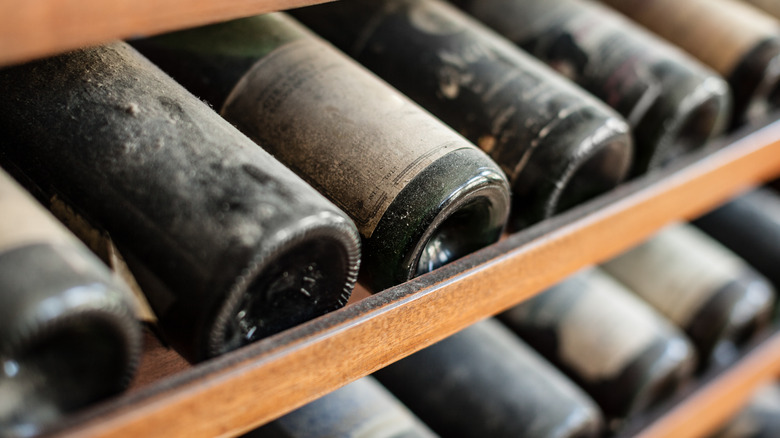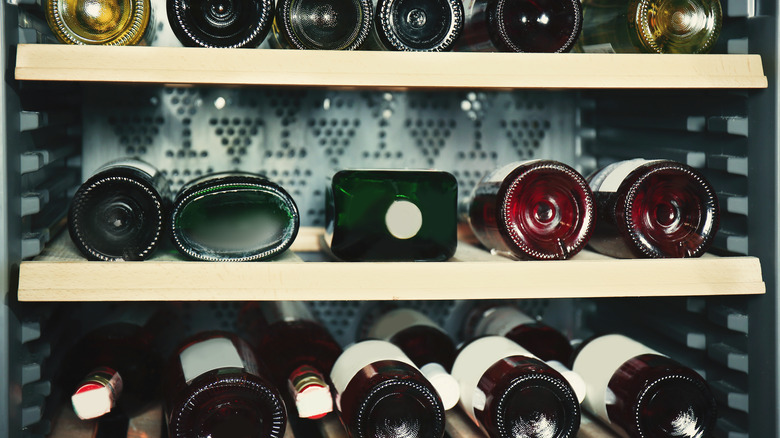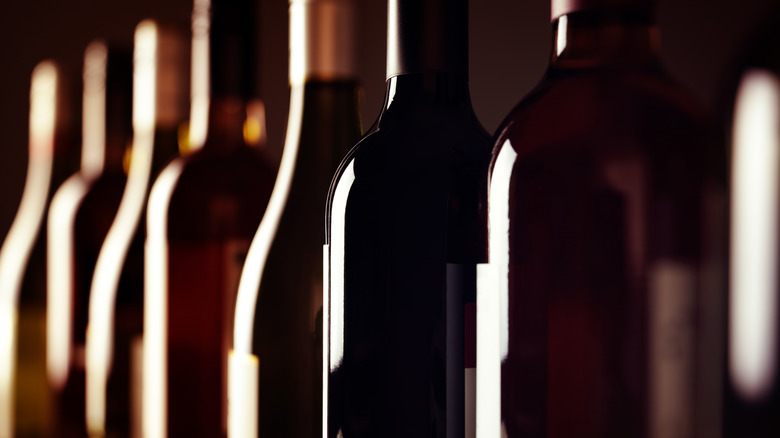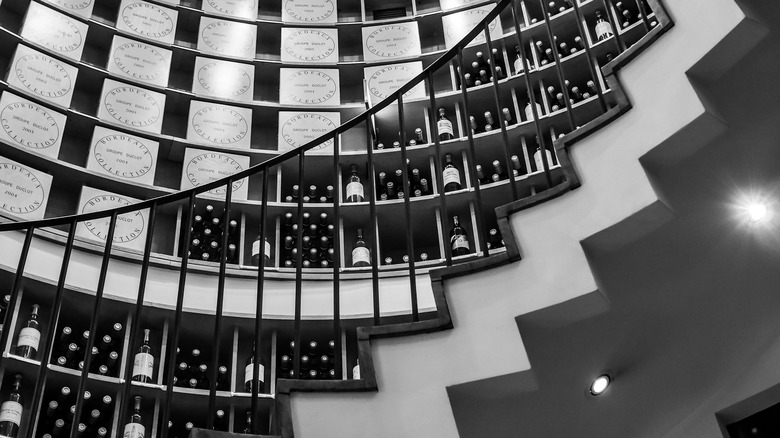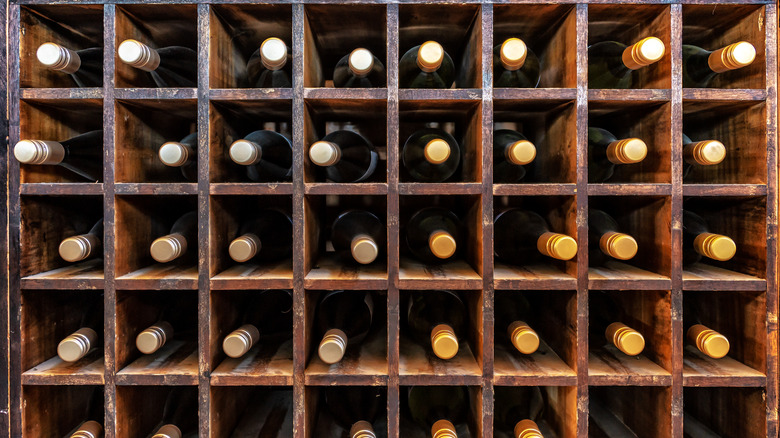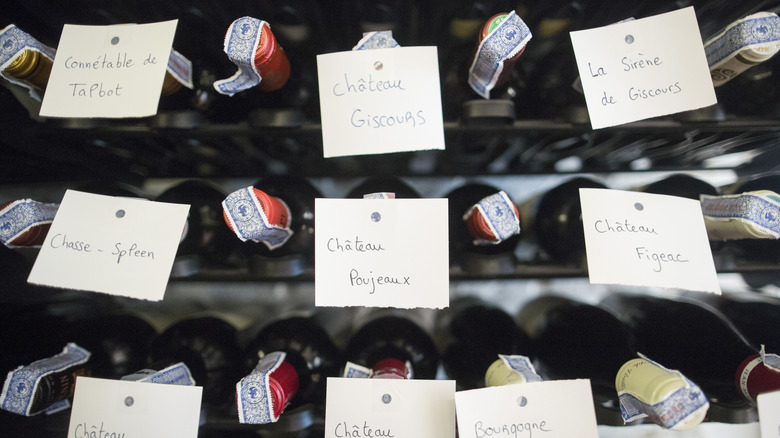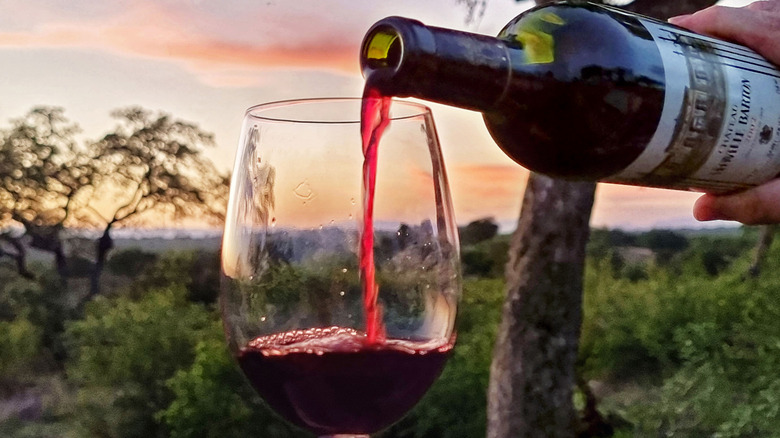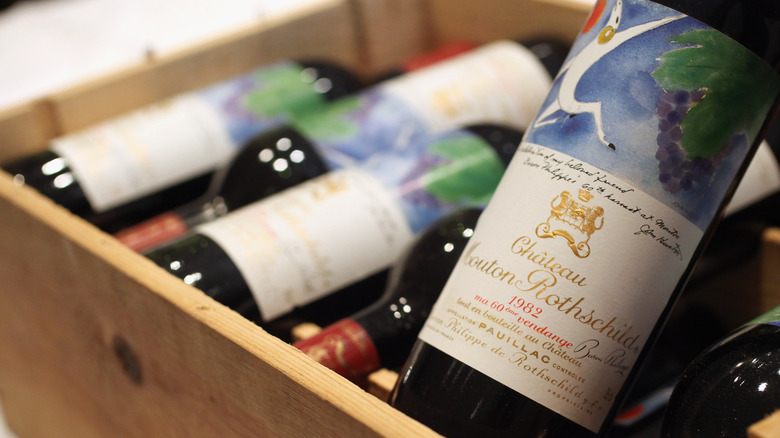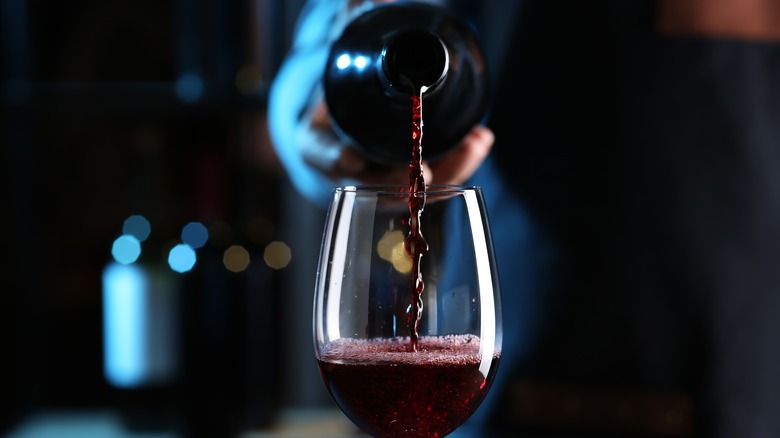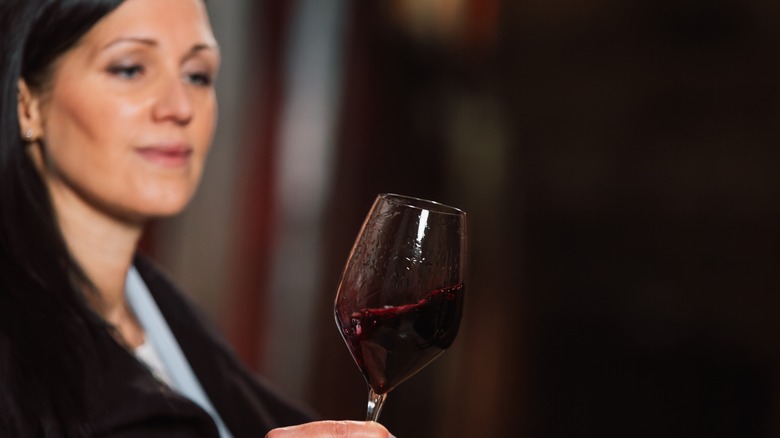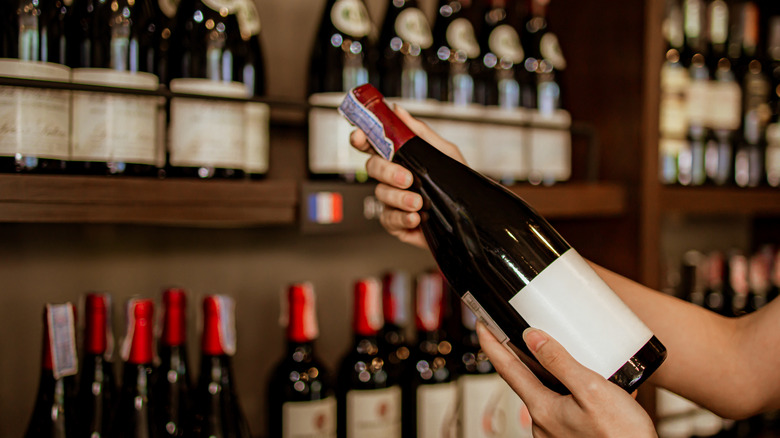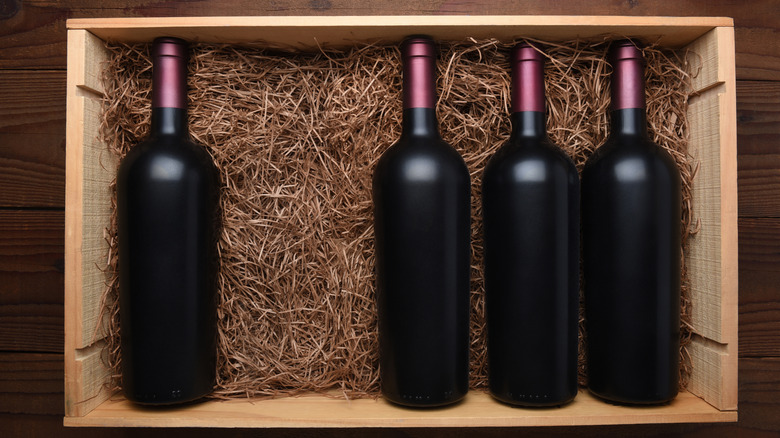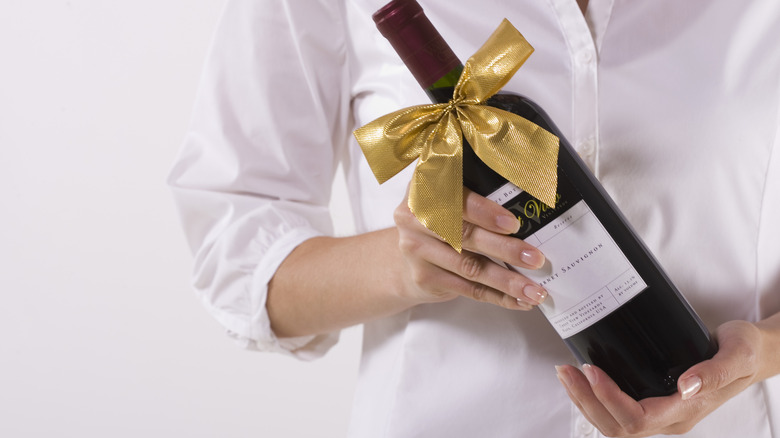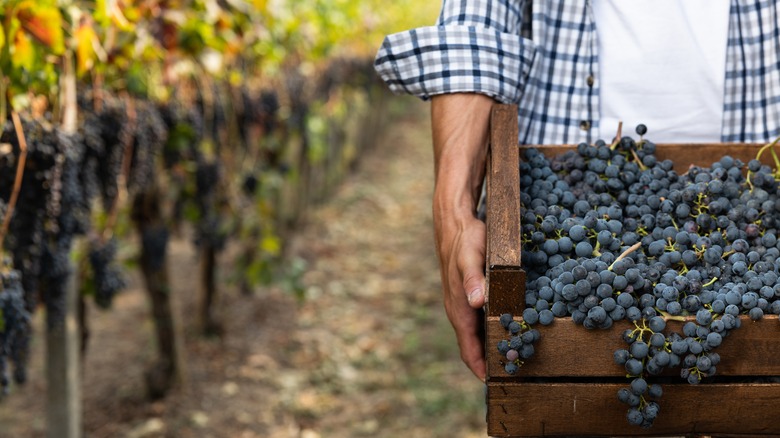13 Tips For Storing And Aging Wine
Whether you are well on your way to owning a cellar brimming with rare bottles of wine or simply want to keep a select few in optimal condition, several factors are key to your success. You may be setting wine aside for a specific future occasion, or maybe you like collecting as a hobby. No matter the purpose, ensuring the environment is fit for long-term storage is important.
While some classic wines have a hefty price tag and are meant to rest for decades before you open them, these aren't the only bottles you should properly care for. Even a few months in subpar conditions can significantly alter the qualities of a wine. You're ahead of the game if your house is set up with a wine fridge or cool cellar space. Nevertheless, you don't need high-end equipment to keep wine successfully. Discover our top tips for aging and storing wine.
1. Aim for stable temperatures and humidity
Temperature recommendations vary, but 55 F is considered suitable by most collectors (via Wine Guardian). It's equally important to avoid significant fluctuations, which can be detrimental to wine and cause the liquid to grow and shrink in the bottle, compromising the cork. With excess heat, oxidation can occur and affect wine color too. Additionally, aromas and flavors can taste cooked, much like the difference between fresh fruit and stewed jam. Meanwhile, very cold temperatures can slow a wine's evolution, altering its flavor.
Humidity primarily plays a role in maintaining the quality of the cork over time. If the air is too dry, the cork will lose moisture and dry out. Its main function is to protect the bottle's contents, slowly letting minor amounts of oxygen in over time, thanks to its porosity. However, as it becomes more brittle, it lets in an increasing amount of air, ultimately speeding up oxidation and the wine's aging process. Decanter specifies a range of 65 to 70% humidity to maintain the cork's natural progression, and 60 to 80% is a broader consensus.
A dedicated wine cellar or fridge will make this task significantly easier, but a damp basement can fit the criteria without additional appliances and costs. If you have a large collection and nowhere to fit it, wine storage companies offer optimal cellar rental space for your prized bottles.
2. Minimize light exposure
It's natural to want to show off your dazzling wine collection, but you'll want to avoid placing it in the spotlight — unless it's an LED display. While bottles made of dark glass fare slightly better than clear ones (amber comes out on top), any amount of sunlight is detrimental to the qualities of a wine over time. If you think this outcome happens over months or years, it's actually a mere matter of hours (via Wine Folly). Even before a bottle makes it to your home, you'll want to take note and reconsider purchasing anything showcased in storefront windows, given the speed of deterioration.
Depending on the source and intensity, heat may also radiate on your bottle, causing various processes that damage the liquid. Meanwhile, UV rays cause B vitamins in the wine to react to protein components, which in turn can release several sulfur compounds, in a process known as light strike. Unless you want your wine to smell like wet wool and taste bitter and acidic, it's worth keeping bottles stored in the dark or away from direct light.
3. Keep bottles away from high-traffic areas
Yet another factor that plays a significant role in the aging outcome of wine is movement. More specifically, vibrations — no matter how minor — will speed up a wine's aging process. These effects were examined in a 2008 study published in the Journal of Food Composition and Analysis, which tested four levels of vibration in red wine over 18 months. A greater motion was shown to reduce various acids in the wine, in turn diminishing the flavor. Other chemical reactions also occurred, demonstrating that more vibrations were related to an increase in the perceived sweetness.
Less balance, less nuanced flavor, and accelerated aging highlight the importance of keeping your wine stash somewhere quiet and still. While a cellar built under a staircase has its charms, the constant traffic from people going up and down can cause your bottles to lose their prime features more quickly. Consider storing bottles in closets away from direct contact, in the basement close to the foundation, or on a structurally stable shelf or rack. Keep in mind that external sources of vibration, such as your washer, dryer, or stereo system, all play a role in the conditions.
4. Store bottles horizontally
Among the mainstream ideas of storing wine, laying it on its side is regularly touted as the key to ensuring longevity. The purpose is to prevent the cork from drying out by keeping it in contact with liquid and creating a tight seal. This reasoning means that screw cap bottles don't require the same treatment, though storing your wines in a consistent manner saves space and streamlines your cellar.
On the other hand, Dr. Miguel Cabral, director of the cork company Amorim, counters this long-held notion by disputing the influence of external humidity on the interior of a bottle (via The Drinks Business). However, the study Cabral uses to back up a number of his points only looked at one bottle kept vertically and one stored horizontally over five years (via Australian Journal of Grape and Wine Research). Considering the unique natural features of cork, this is hardly an overarching conclusion.
If you're storing wine for a year or less, it won't make a big difference either way. However, if you plan to keep it for several years, laying your bottles horizontally is one more step, along with temperature, humidity, and light control that will improve the outcome over time.
5. Keep your collection accessible and organized
As you accumulate bottles, it's normal to start shoving them haphazardly wherever you find space. While that's not a big deal if you have a couple of dozen, it will quickly get chaotic beyond that. Considering variables such as light, temperature, horizontal storing, and humidity, buying dedicated furniture and equipment is worthwhile.
Regardless of the option you select, accessing your collection and looking through it can improve the chances that you drink wines in their peak window. If you're sifting through boxes stacked on top of each other, it's all too easy to skip over interesting wines that might be ready for drinking. Or, you might have to move countless bottles to find the one you have in mind.
The specifics will vary depending on how you store your wine, but categorizing it based on similar characteristics is a good start. There are plenty of methods that will appear more or less logical based on how you think about your collection. For example, you might classify it by year, region, grape variety, producer, and so on. Bottles meant to rest for decades don't need to be front and center, whereas those with earlier drinking windows should be more visible. From basic pen and paper lists to bottle tags and wine inventory apps, there are plenty of tools to enhance your organization. Of course, the most effective is the one you consistently use.
6. Assess the qualities that help wine age
Although you don't need to stick to purchasing high-end bottles to age, not all wines have the features that allow them to improve over time. In fact, the vast majority of wine on the market is meant for immediate consumption (within the next five years). Essentially, qualities that protect the contents of a bottle and keep the wine lively are key factors to its successful evolution. Some of these characteristics are innate to a grape variety, others come from the vineyard and its climate, and many can be tweaked with winemaking practices (via Wine Enthusiast).
Acidity is highly relevant because as it fades over time, it can leave a once zingy wine tasting flat and dull. Starting with a high-acid wine gives it more leeway to age without losing its vibrancy. Tannins in red wine — perceived as astringency in the mouth — also help sustain the structure and reduce oxidation. Corks let in a small amount of oxygen, causing tannins to become softer and smoother. If they are lacking from the start, the wine may taste lifeless and lack balance 20 years down the road.
Alcohol is another element that can speed up the wine process since higher levels typically mean riper grapes and lower acidity. Curiously, fortified wines with an ABV of around 20% tend to hang around for the long haul. Finally, although dry wines represent a larger portion of the market, sweet wines regularly outlive their counterparts.
7. Consider whether a wine is age-worthy
Although it shows great restraint, storing all your bottles for years before drinking them is not recommended. According to Binwise, about 90% of wines on the market under $30 to $40 are intended to be consumed within five years at most, and other estimates are even greater. Since factors in the vineyard and winemaking process affect their characteristics, most mainstream bottles are made to be drunk now.
If you've picked up a bottle from a reputable producer, additional clues indicate whether it can stand to rest for some time. For starters, natural cork closures tend to optimize the amount of oxygen passing through to the wine, assisting it in the aging process. While there are exceptions with screw caps, they aren't generally used with the intention of long-term storage.
Meanwhile, certain regions and grape varieties are inherently better suited for aging. High tannic grapes like cabernet sauvignon, nebbiolo, tempranillo, and sangiovese, to name a few, are at the source of some of the world's greatest vintage wines — Bordeaux and Napa, Barolo, Rioja, and Chianti, respectively. Riesling is a grape known for its high acidity and sugar, which allow it to be among the longest-standing white wines. Chablis and Champagne also boast high levels of acidity that make them great contenders for your cellar. Seek out these features if you decide whether to keep a bottle within easy access or tuck it away for later.
8. Know the peak drinking times for your bottles
Since you can't really taste every bottle in your cellar on a yearly basis to see when it's at its best, it helps to use additional resources to determine the ideal drinking window. Many collectors describe wines as experiencing an arc over time, with an apex at its prime and an eventual tapering off as it reaches its end — or death if you're feeling dramatic (via Vivino). Somewhere within this time frame, aging wines often experience a dull passage (known as a dumb phase) during which they lack many of their appealing characteristics.
Some winemakers propose ideal time frames for consumption to help budding collectors with these often confusing fluctuations. Many wine aficionados also share their experiences with specific bottles in online forums or wine apps to help other consumers decide when to open a bottle. Still, it's important not to perceive these timelines as absolute. Factors such as individual differences in bottles, storage conditions, and personal taste can all affect what is considered to be a peak drinking window.
9. Determine if you even like aged wine
It might seem that anyone who knows what's up in the wine world is fond of vintage wines — the older, the better. From the care and patience taken to conserve them in pristine conditions to the status they denote and the awe they inspire, old wines are often placed on a pedestal. However, it's important to note that wine undergoes many transformations as it ages. As long as the environment is optimal for storage, these changes are typically beneficial, but the outcome can be notably different from the wine as it was when first bottled.
Time smooths out rougher edges for high-tannic wines, making for a generally pleasant experience. Wines develop tertiary aromas as they age, distinct from the primary aromas that come from the grape and the secondary aromas from the winemaking. Fresh fruit yields way to dried fruits and savory notes, zestiness takes on a warmer profile, and earthy undertones become increasingly present.
If you love sipping fruity, bold wines, you might find an aged rendition lacking the very qualities that drew you to it in the first place. On the flip side, if you're seeking complexity and layered flavors, these characteristics are often the result of time. While some wines are only released after a number of years because this slow evolution is necessary to highlight their features, whether a bottle tastes better one or 20 years after production can significantly vary according to personal taste.
10. Don't wait too long
Anticipation is a large part of many experiences, and aging wine is no different. Perhaps you've deliberated over the perfect bottle to purchase and set it aside until the moment seems right to uncork it. Sometimes, the interim during which you store the wine can lead to amplified expectations and cause you to wait longer than ideal.
Several variables affect the outcome of time on a particular bottle of wine, but Wine Spectator reports that pushing it past 30 to 40 years is often already approaching a limit for a wine's optimal characteristics. Another misconception is that a subpar bottle will always improve over time. If it doesn't have enjoyable sensory qualities from the start, chances are those factors won't magically appear over time.
The exact timing can leave you prey to anxiety as you struggle to determine the perfect window to open a bottle. Waiting too little leads one to wonder, "What if?" whereas waiting too long leaves the drinker brooding over what has once been and no longer is. Either way, the tension of finding the perfect moment misses the point that wine is constantly evolving, expressing different features over time. That being said, if you wait too long, wine becomes vinegar.
11. Experiment with different durations
If the extent of your wine storage is a 12-bottle rack, this tip won't be of great value; but if you're serious about experimenting with vintage wine, it can be incredibly revelatory. To truly understand the evolution of wine over time, it's important to taste the same wine at different points. For a more conservative approach, buy six bottles of the same wine or go for a full case of 12. Then, do your own research by tasting it at various stages. To properly benefit from your analysis, take notes at periodic intervals.
For example, you might open a bottle immediately or within a year or two of purchasing it and note the primary fruit aromas present. Another bottle from the case could be tasted at year five, then year 10, and so on, depending on the wine's aging potential. This approach will give you better clues about the transition from a young wine to a vintage one and help you identify which characteristics you most enjoy. Of course, how you store the bottles will affect the results, so be sure to keep them at a stable temperature and humidity level and away from light and vibrations.
12. Age wine with a purpose
While some people relish the act of collecting — whether it be wine, stamps, or luxury cars — if that isn't your primary goal, there are other reasons to set the wine aside for the future. For starters, wine drinkers who are interested in more than just the buzz can discover novel characteristics of the beverage. Through the process of aging a bottle, various sensory features stand out, expanding one's tasting repertoire.
Another source of inspiration to hold off on opening certain bottles is to choose wines for an occasion. For example, you may wish to celebrate an event, be it a birthday, wedding anniversary, project start, or relationship. In these cases, some patience will reward you with the chance to commemorate a milestone with a special bottle you've been saving. Or, gift a newly-wedded couple with an age-worthy wine from their nuptial year. The best gift is one that keeps giving.
13. How do natural and organic wines fare?
With an ever-increasing market of natural and organic wines, it's normal to wonder whether they are equally well suited for aging. After all, some people claim natural wines aren't as stable due to the general lack of added sulfites. On the other hand, organic wines can contain minimal levels of sulfites depending on their provenance. Most natural wines are also unfiltered and unfined, which means that they still have particles and microbes that might eventually lead to spoilage.
That being said, many natural wines are stable and boast high acidity and notable tannins, which are protective over time. Isabelle Legeron, a key figure in the natural wine industry, notes that sulfites merely kill bacteria; they don't directly affect the shelf-life of a wine (via The Drinks Business). Instead, she points to terroir — the combination of land, climate, farming, and winemaking — as a key factor in a wine's longevity. Organic farming, which prizes non-chemical agriculture and a reliance on the vine's vigor, is a valuable place to start.
Given the wide range of styles of natural wine, from easy-drinking glou-glou bottles to complex cellar-worthy options, a blanket statement about ageability can't be made. The specific producer and, in turn, their vineyard and winemaking practices are highly relevant, as are the general qualities that make wine ageable and how you store it. Since additives and preservatives are rarely included, excellent storage conditions are especially important.
